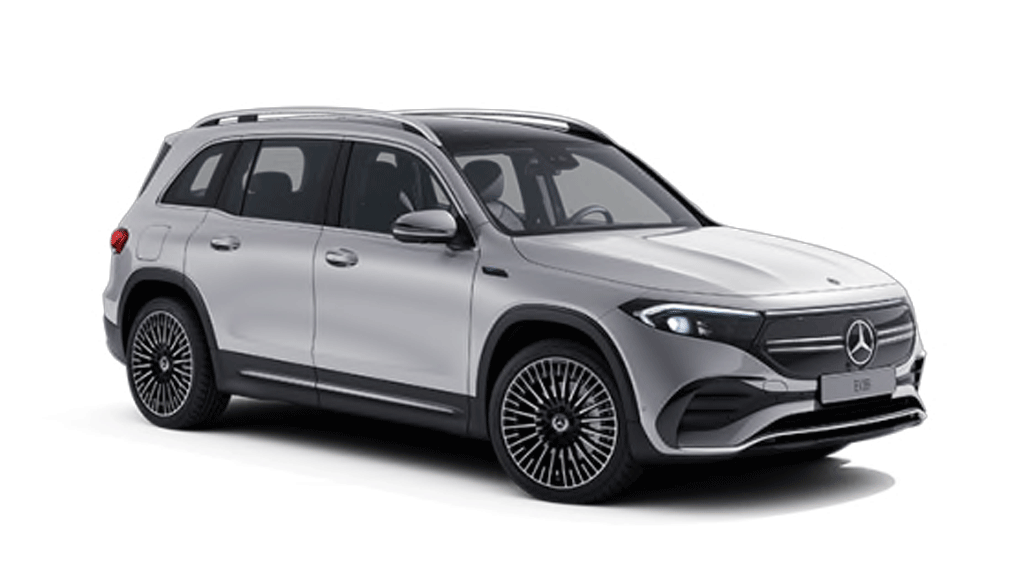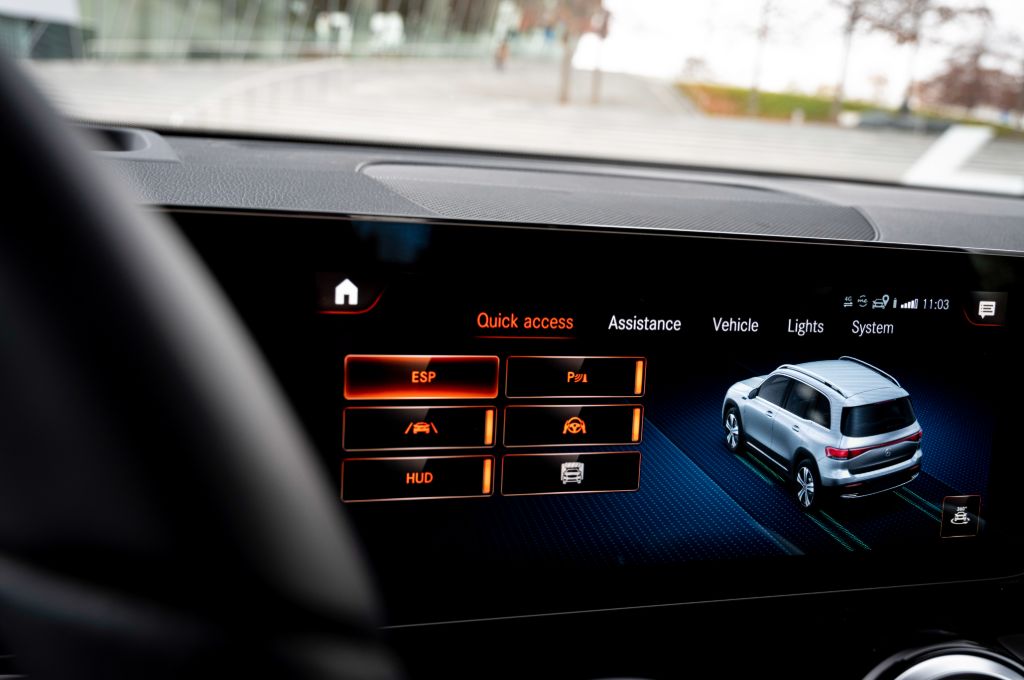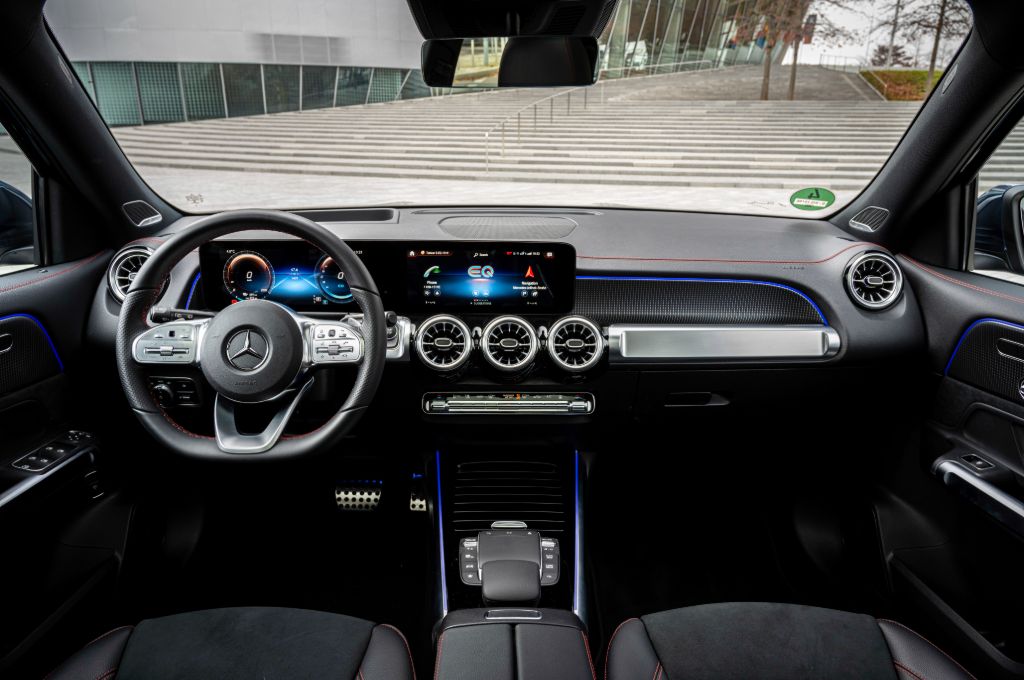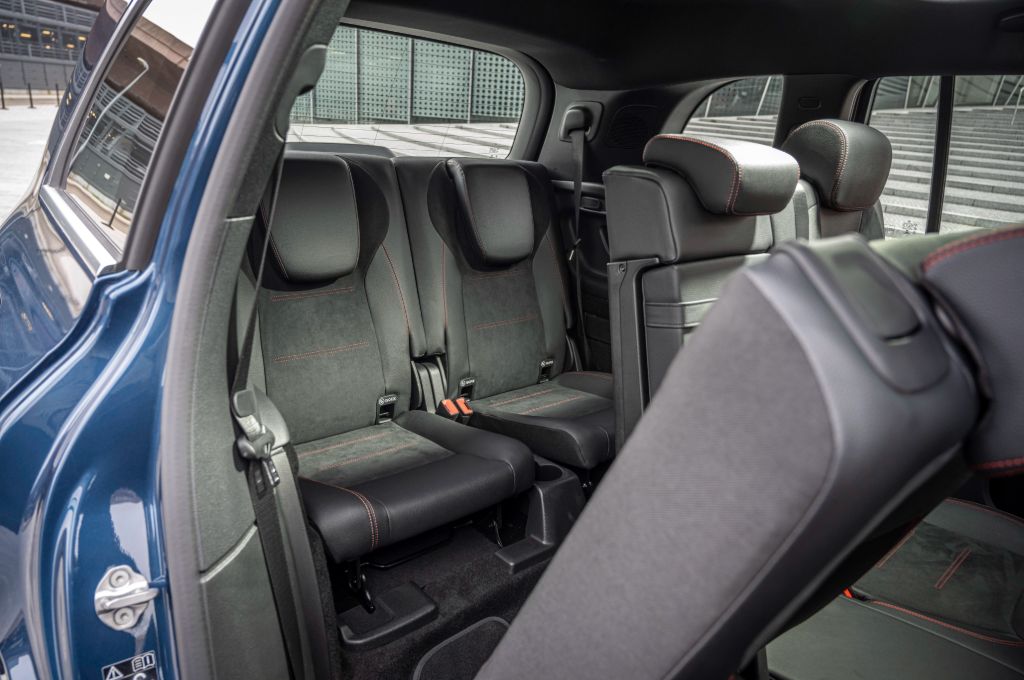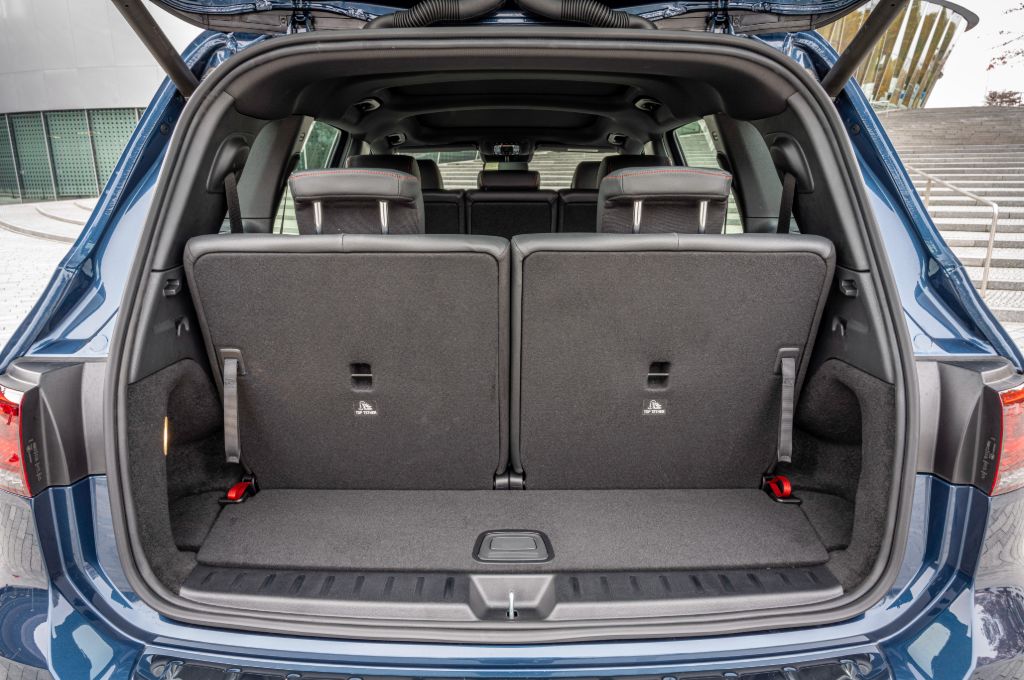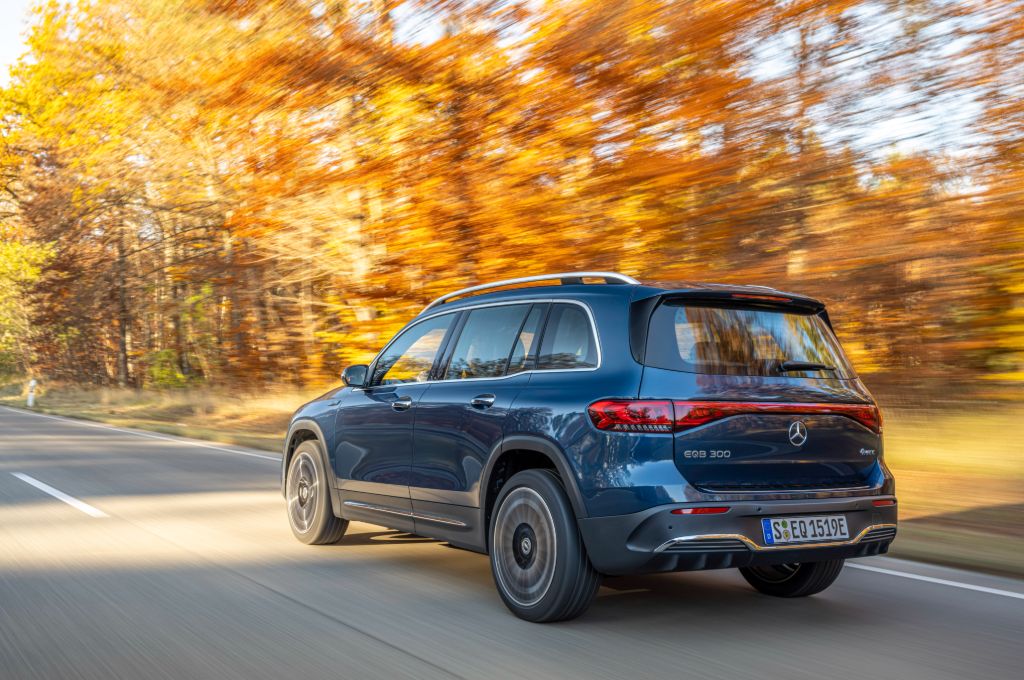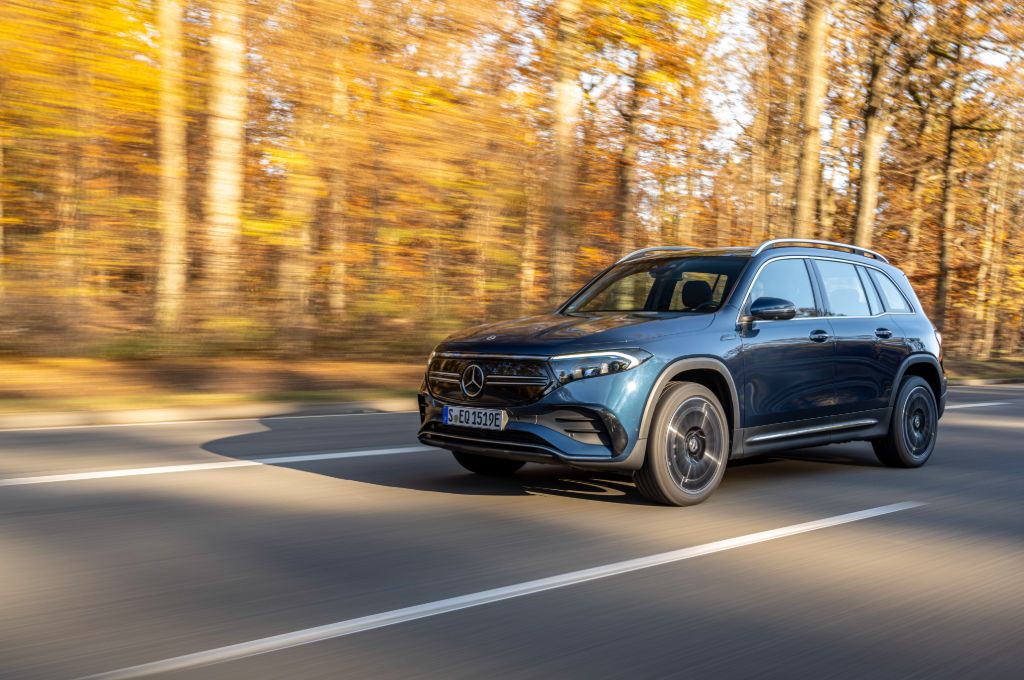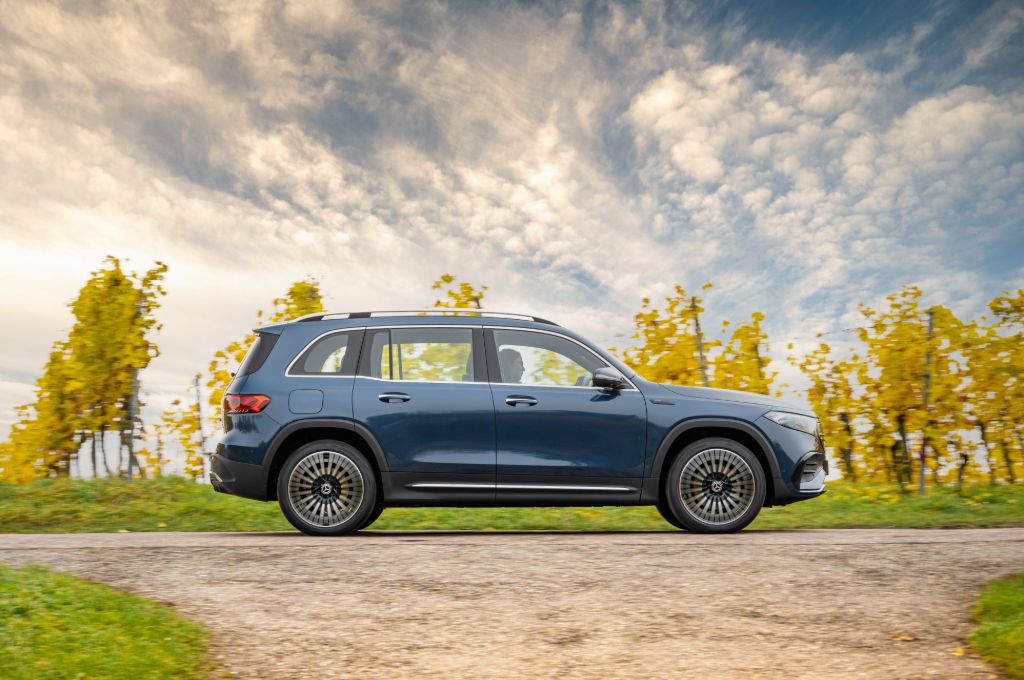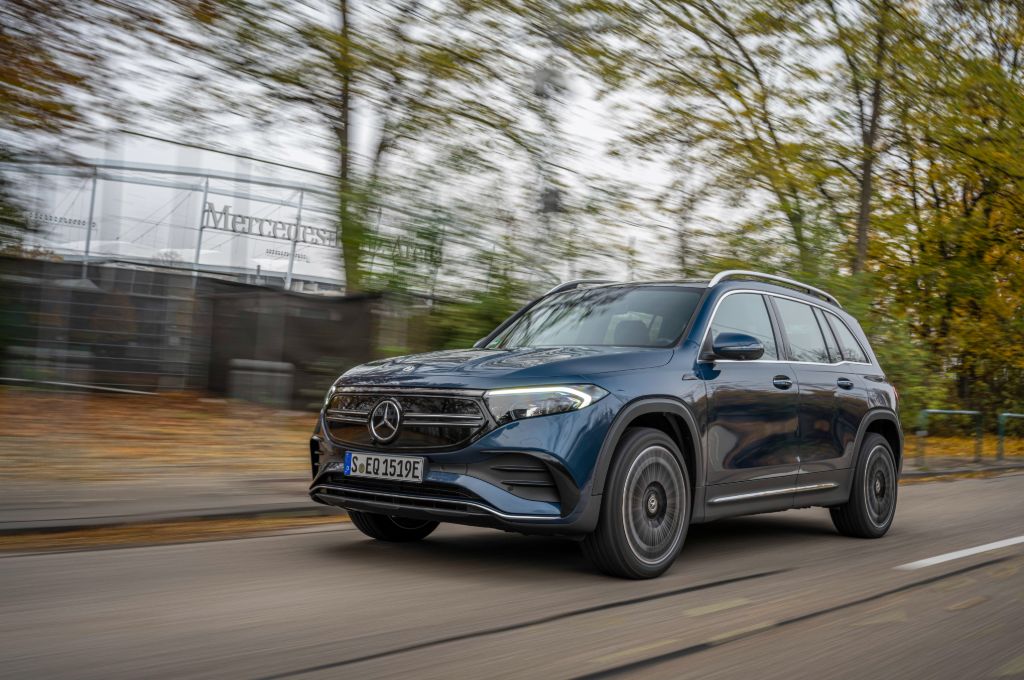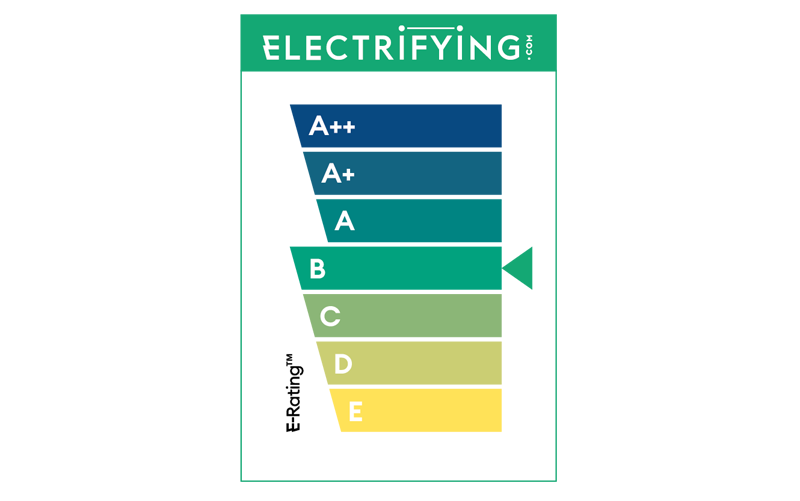Performance
The EQB comes with two power outputs, at least at launch, both hooked up to the same 66.5kWh battery. And both use twin motors for 4Matic four-wheel drive, too. The EQB 300 produces 225bhp while the EQB 350 peaks at 288bhp, though they share an identical 273lb ft torque figure. Their 0-62mph times may be nearly two seconds apart, but in truth it won’t really matter – especially if you’re filling those seats up with kids, as you surely will most of the time if you’ve chosen this over the smaller EQA. Or, indeed, a plethora of other plug-in SUVs.
It operates just like any other little Merc, with Reverse or Drive selected from a stalk on the right hand side of the steering wheel and an electric parking brake placed slightly awkwardly down by your knee. The main difference, besides the lump of instant torque from a standstill, is the fact you’ve three levels of brake regen to choose from via paddles on the steering wheel.
Drive
There’s a bunch of driving modes too, cycling through Eco, Comfort and Sport to adjust throttle response and – if you’ve ticked the right boxes – suspension softness too. But surely want everything in its least aggressive form; neither version of the EQB can fairly be described as being particularly engaging to drive, but that’s never been Mercedes’ ‘thing’ among the big three German premium brands. BMW typically majors on driving engagement while Mercedes prioritises comfort.
But both models have good mid-range pulling power and are refined and comfortable at speed. Sound insulation is, as we’ve come to expect from Mercedes, incredibly good while the ride is surprisingly compliant given the weight and large wheels, though if you’ve got one of the fancy launch editions with 20in wheels you’ll find a brittle edge to its ride quality in town. It’s the price you pay for fashion.










